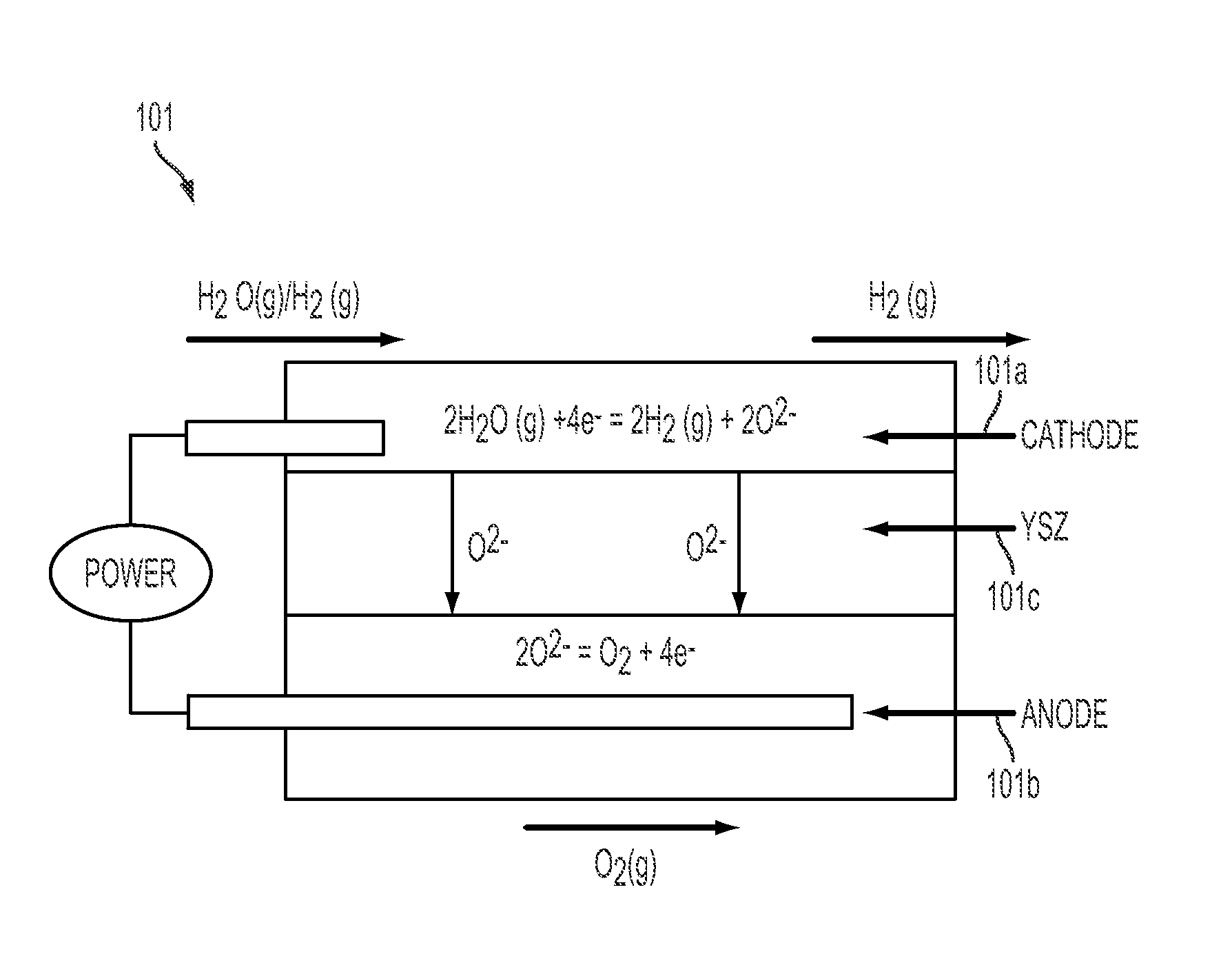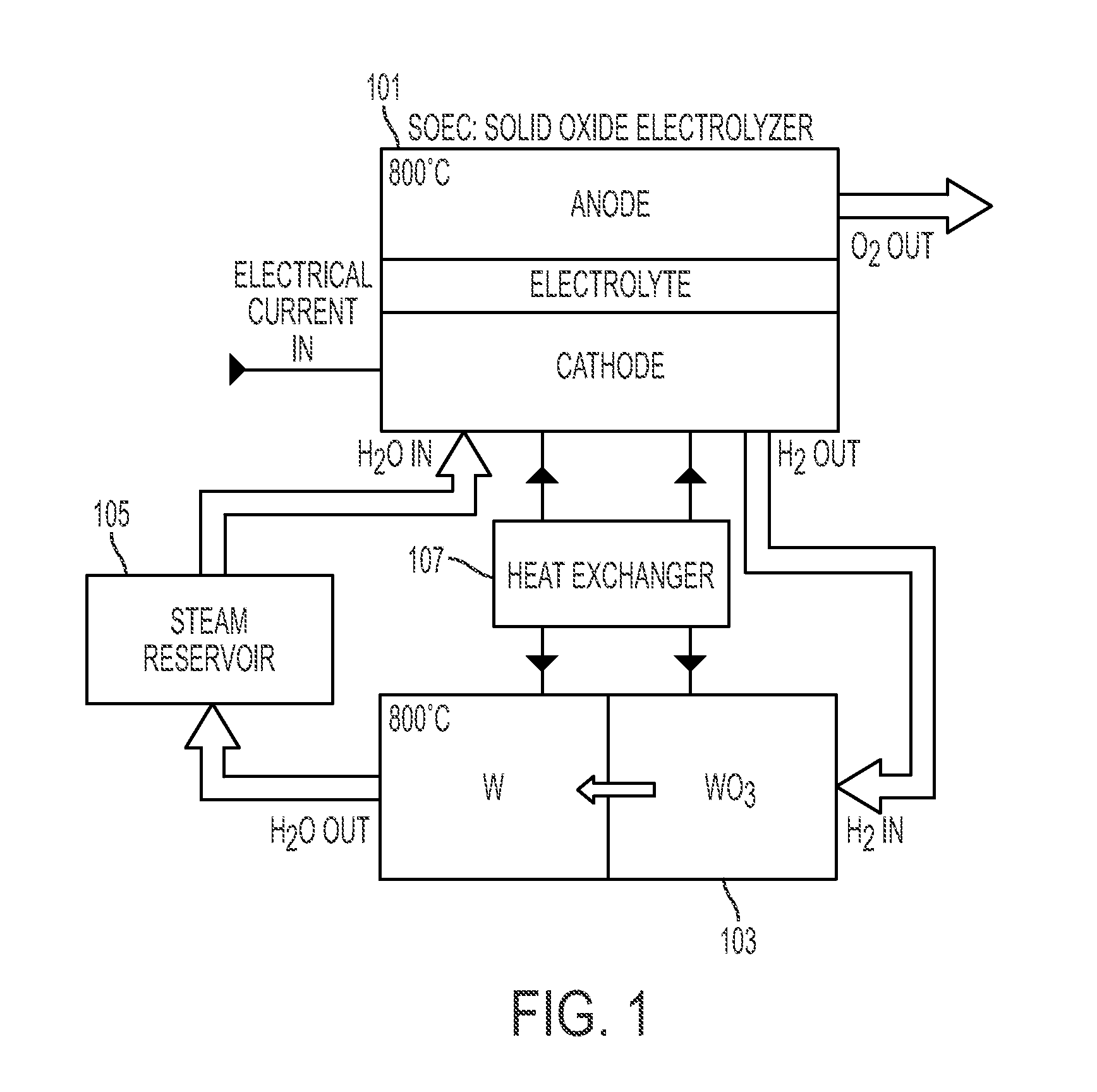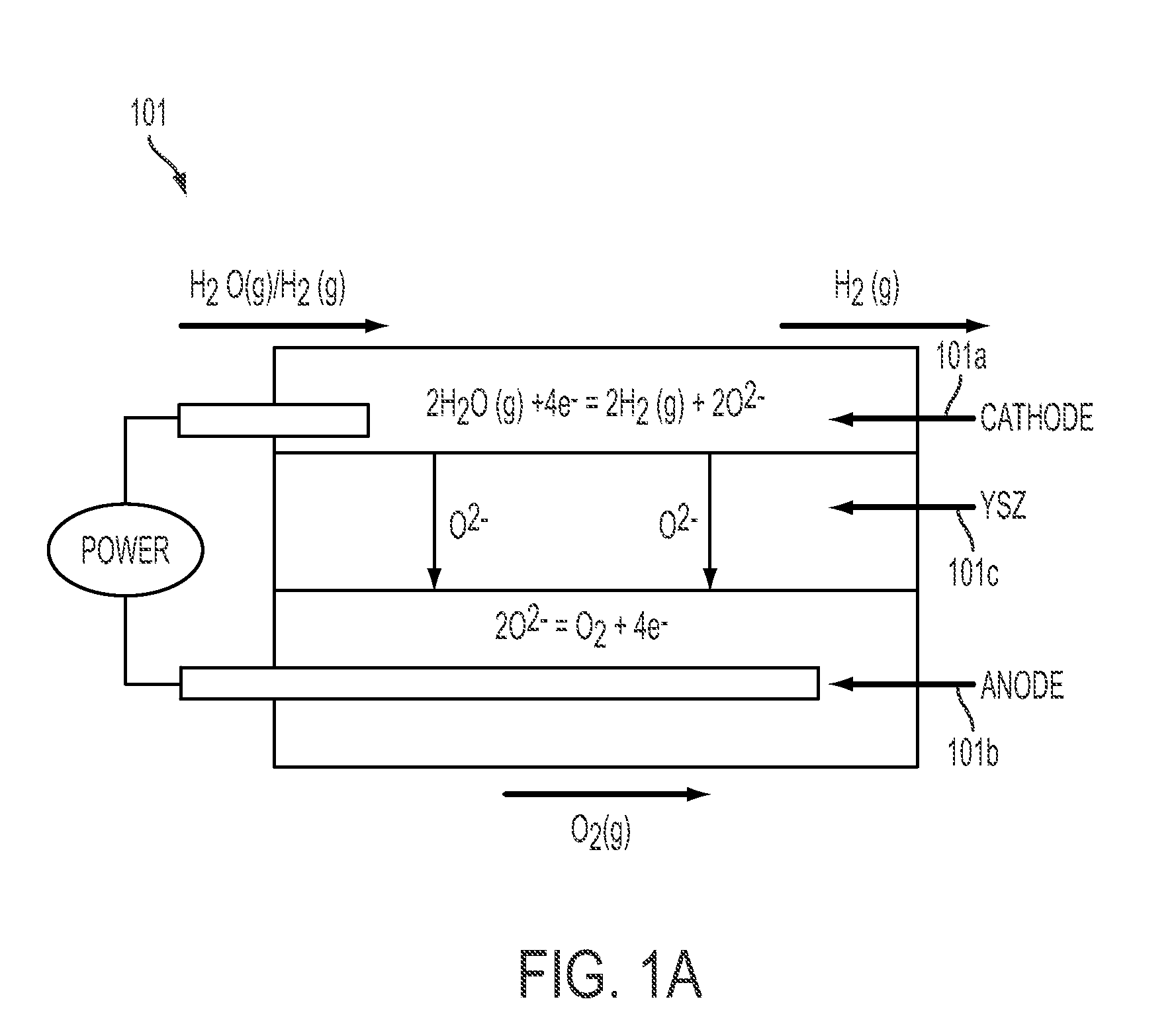System and method for energy storage and recovery
a technology of applied in the field of system and method for energy storage and recovery, can solve the problems of slow reaction to changing energy demand conditions, low energy efficiency, and inability to store and provide electricity in the minutes to hours time scale, and achieve the effects of high efficiency, high volumetric energy density, and high efficiency
- Summary
- Abstract
- Description
- Claims
- Application Information
AI Technical Summary
Benefits of technology
Problems solved by technology
Method used
Image
Examples
example 1
[0096]In this example, reducing reactor / oxidizing reactor for W / WO3 is modeled as a loosely compacted shallow powder bed. This allows the reactant and product gases to easily penetrate and leave the powder bed, respectively, without any gas-phase mass transfer hindrance. This is expected to result in a bed where the resistance to both molecular, as well as Knudson diffusion of the gas can be neglected. Furthermore, if the particle size is small and the gas flow rate employed exceeds the starvation limit, the diffusion of the gas through the thin solid product layer surrounding the solid reactant particle and the mass transfer steps in the gas phase would be much faster compared to the chemical reaction.
[0097]Under these conditions, the conversion between the WO3 / WO2 can occur in the entire shallow powder bed and that between the WO2 / W occurs as a moving front through the shallow powder bed. As shown in FIG. 9, the reaction between the WO3 and the WO2, involving the intermedi...
example 2
Modelling of Power Bed
[0099]The overall reduction reaction
WO3(s)+3H2(g)=W(s)+3H2O(g)
can be represented as follows:
bB(s)+A(g)=fF(s)+eE(g)
[0100]In such instance, the moving reaction front for the conversion of WO2 / W in the shallow powder bed can be schematically depicted as shown in FIG. 10, and assuming a first-order reaction kinetics, the velocity of the moving reaction interface can be modeled as:
v=yt=2nbMBkCAρ
where n is the average number of horizontal rows of the small particles building up the reaction front, ρ is the density of the particle, MB is the molecular weight of B, b is the stoichiometric constant, k is the reaction rate constant, and CA represents the bulk concentration of gas A. The reaction rate is modeled as:
ΔWt=ΔW∞2nbMBkCAhρ
where
ΔW=Wo-WtWo
and W represents the weight of the bed at time t, and h is the bed height.
[0101]Also, if the reaction is a thermally activated process, and the heat transfer is not rate-controlling (observed for the W / WO3 system), the reaction r...
example 3
Experimental Verification
[0102]Experimentally, the velocity and width of the reaction front, the reaction rate constant, the activation energy, and the reaction rate as a function of bed height can be determined. These measurements can be made as a function of particle size, morphology, and the number of energy storage and recovery cycles. The shallow powder bed can be sectioned at different time intervals and the system can be characterized to check the structure of the porous bed and verify model predictions. Two different types of experimental techniques can be used for this investigation.
[0103]First, the shallow loose powder bed can be heated to the desired temperature in an inert atmosphere, and then the reaction gas (H2 / H2O) can be introduced into the reaction chamber. The weight changes as a function of time can be monitored, for example, under a constant rate of temperature increase. The H2 / H2O inlet mix can be based on what is expected to be coming out of the RSOEC system a...
PUM
| Property | Measurement | Unit |
|---|---|---|
| temperature | aaaaa | aaaaa |
| temperature | aaaaa | aaaaa |
| electrical energy | aaaaa | aaaaa |
Abstract
Description
Claims
Application Information
 Login to View More
Login to View More - R&D
- Intellectual Property
- Life Sciences
- Materials
- Tech Scout
- Unparalleled Data Quality
- Higher Quality Content
- 60% Fewer Hallucinations
Browse by: Latest US Patents, China's latest patents, Technical Efficacy Thesaurus, Application Domain, Technology Topic, Popular Technical Reports.
© 2025 PatSnap. All rights reserved.Legal|Privacy policy|Modern Slavery Act Transparency Statement|Sitemap|About US| Contact US: help@patsnap.com



